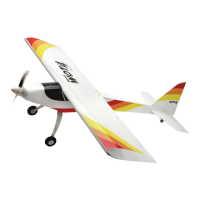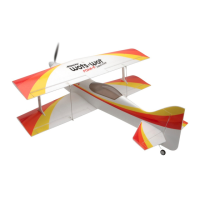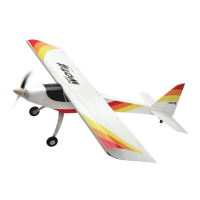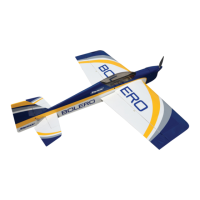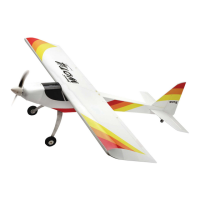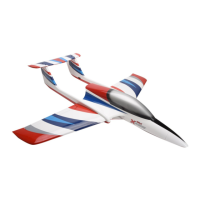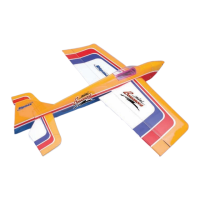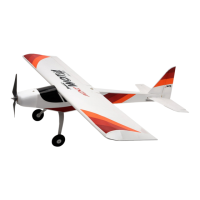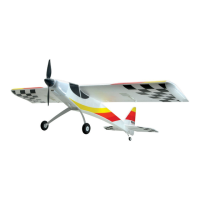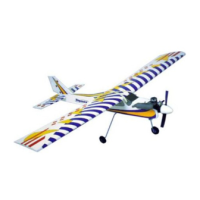Do you have a question about the Ripmax Acro Wot Foam-E and is the answer not in the manual?
Details Chris Foss's early fascination with flight, his competition career, and transition to model manufacturing.
Highlights the ACRO WOT Foam-E's innovative internal structure, carbon reinforcements, and pre-installed components.
Lists all components included with the ACRO WOT Foam-E model for identification.
Identifies and explains the different types of hardware used for assembly.
Steps 1-5 detail attaching the tail assembly, pushrod, and fin to the fuselage.
Steps 6-10 cover securing the fin, positioning and securing the tailwheel assembly.
Steps 11-15 detail securing the rudder, re-attaching the swing keeper, and mounting the undercarriage.
Connect factory installed servos and ESC to your chosen receiver.
Attach receiver to radio bay floor and install aileron extension lead if needed.
Step-by-step guide to bind the receiver to the transmitter using the bind plug.
Details the compatibility of the RTF model with Futaba 2.4GHz S-FHSS radio systems.
Diagram and labels identifying controls and functions on the transmitter.
Steps 16-17 cover connecting servos, fitting the wing, and securing it.
Steps 18-22 cover the propeller, spinner, and final model completion with decals.
Carefully remove pre-cut decals and apply them to the model in the correct position.
Simple steps to install the Li-Po battery, secure it, and ensure cables are clear.
Recommended control throws for initial flights, measured at the widest point of the surface.
Instructions for balancing the model by adjusting Li-Po battery position for correct C/G.
Essential checks before flying: charge batteries, tighten screws, check C/G, control surfaces, and wing bolts.
Describes the model's flying characteristics and its suitability as a follow-on from a trainer.
Information on where to obtain spare parts and locate local Ripmax stockists.
